Loop NYC driverless-car proposal offers Manhattanites more time and green space
New York studio Edg has proposed converting some of Manhattan's major roads into public-transit highways for driverless vehicles, in order to reduce travel times and turn the island's central thoroughfares into landscaped parks.
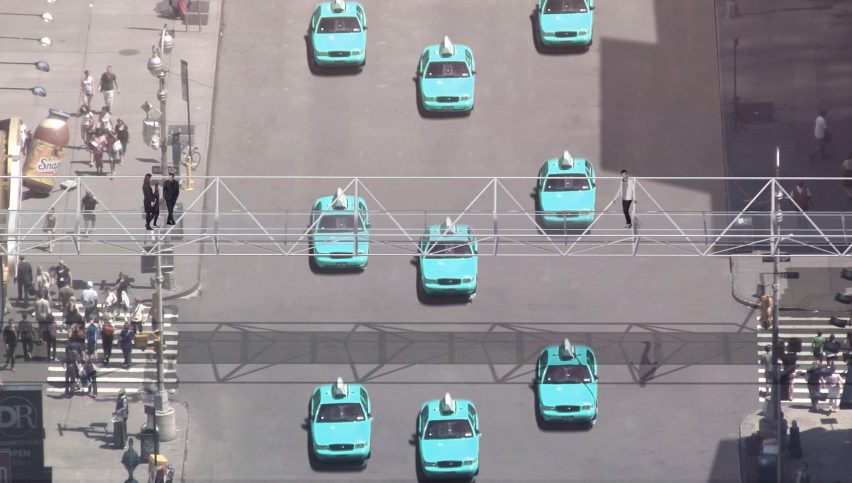
Edg's project, named Loop NYC, envisions swapping existing cross streets and highways for "driverless expressways" that could shuttle people around the city in a fraction of the time.
The West Side Highway and FDR Drive would have one lane in each direction reserved for autonomous public vehicles, which would connect to the bridges and tunnels to help manage the flow of incoming traffic.
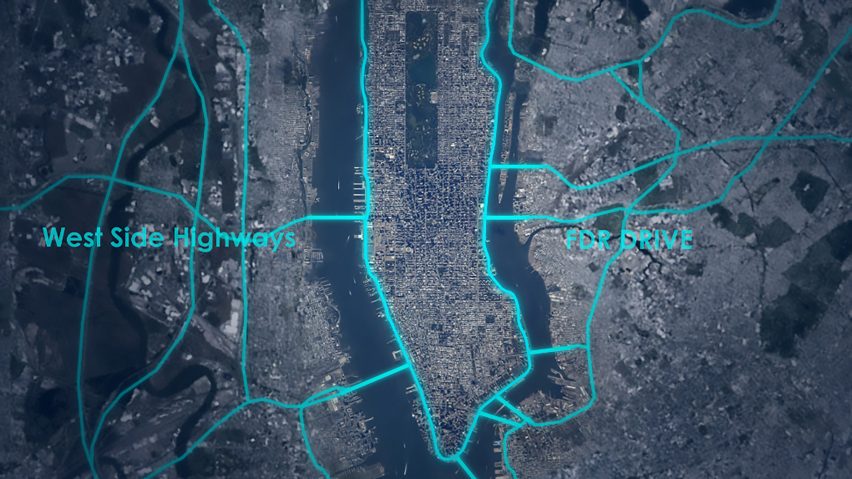
Dual-direction cross streets – 14th, 23rd, 34th, 42nd, 57th, 86th and 110th – would also have lanes exclusively reserved for driverless cars or buses, creating a series of loops down the island for them to whizz around.
The self-driving vehicles would remain separated from the general road traffic to help avoid accidents, while overpasses and underpasses would be constructed to ensure the safety of pedestrians.
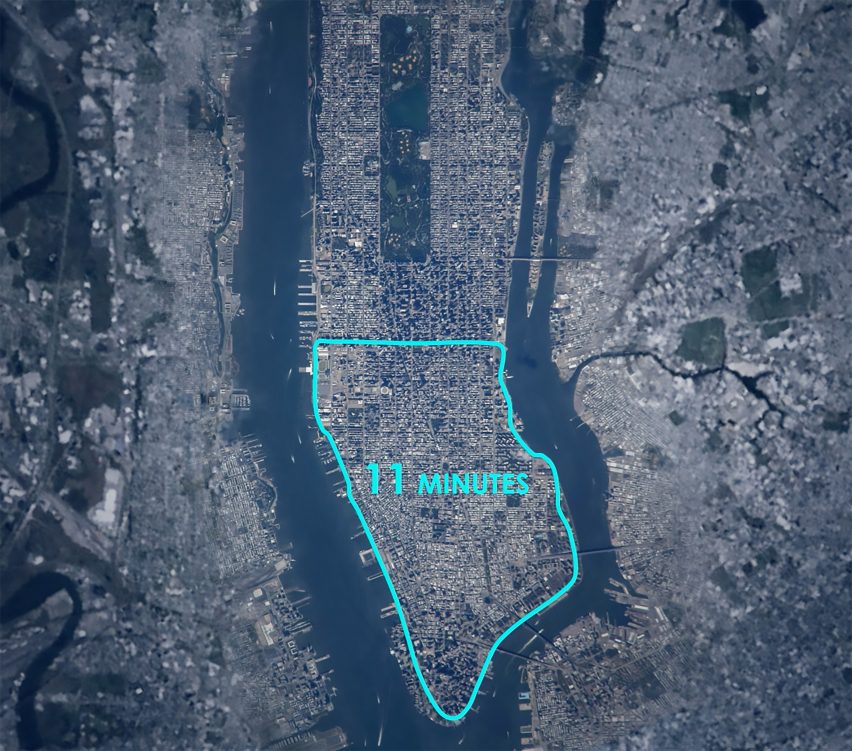
Edg calculated that their system would reduce the journey from Grand Central Station to Lower Manhattan and back from 40 minutes to 11 minutes.
"This could save the average New Yorker an average of 30 minutes on their daily commute, which, over the course of a lifetime, would yield the return of a full year," said the studio.
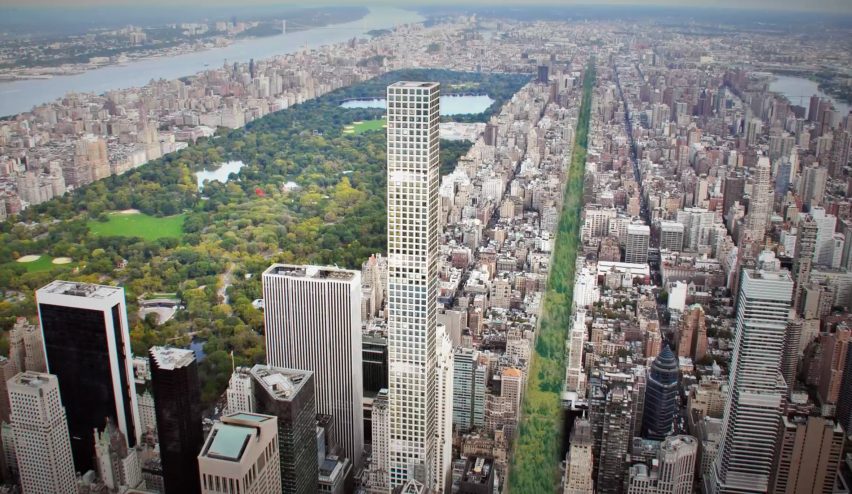
The team also believe that the driverless-car network would allow them to convert other roads into green public spaces stretching the length of Manhattan.
Its proposal outlines a 13-mile-long (21-kilometre) landscaped area that would begin at Battery Park on the island's southern tip and run along Broadway up to Union Square, where it would split and continue up both Broadway and Park Avenue.
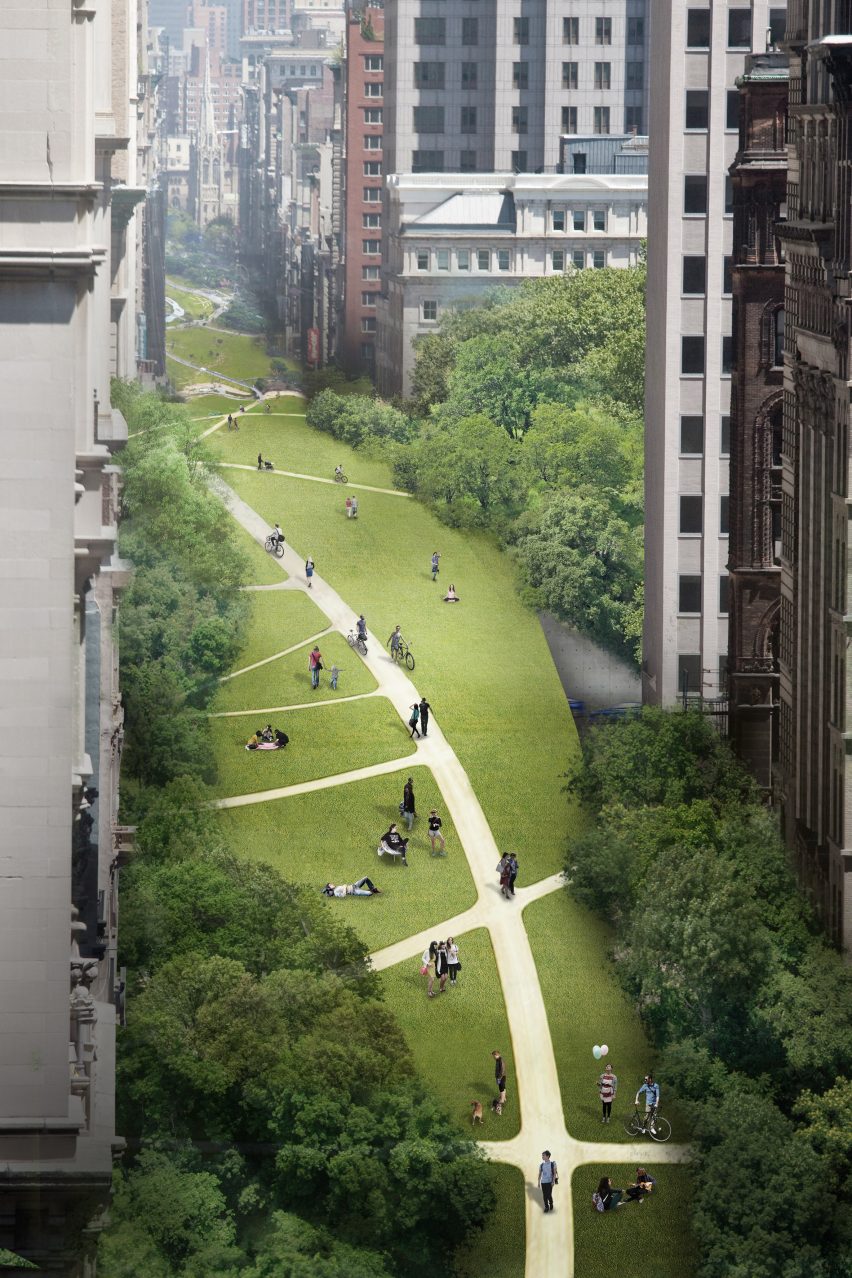
Bike paths and pedestrian bridges through the 200 acres (81 hectares) of new park would be included for commuters.
"By automating a portion of the traffic grid with driverless vehicles, we opened some really captivating opportunities to reimagine infrastructure, enabling us to reclaim both Broadway and Park Avenue to create parkland running the length of the island," said Edg founder and managing partner John J Meyer.
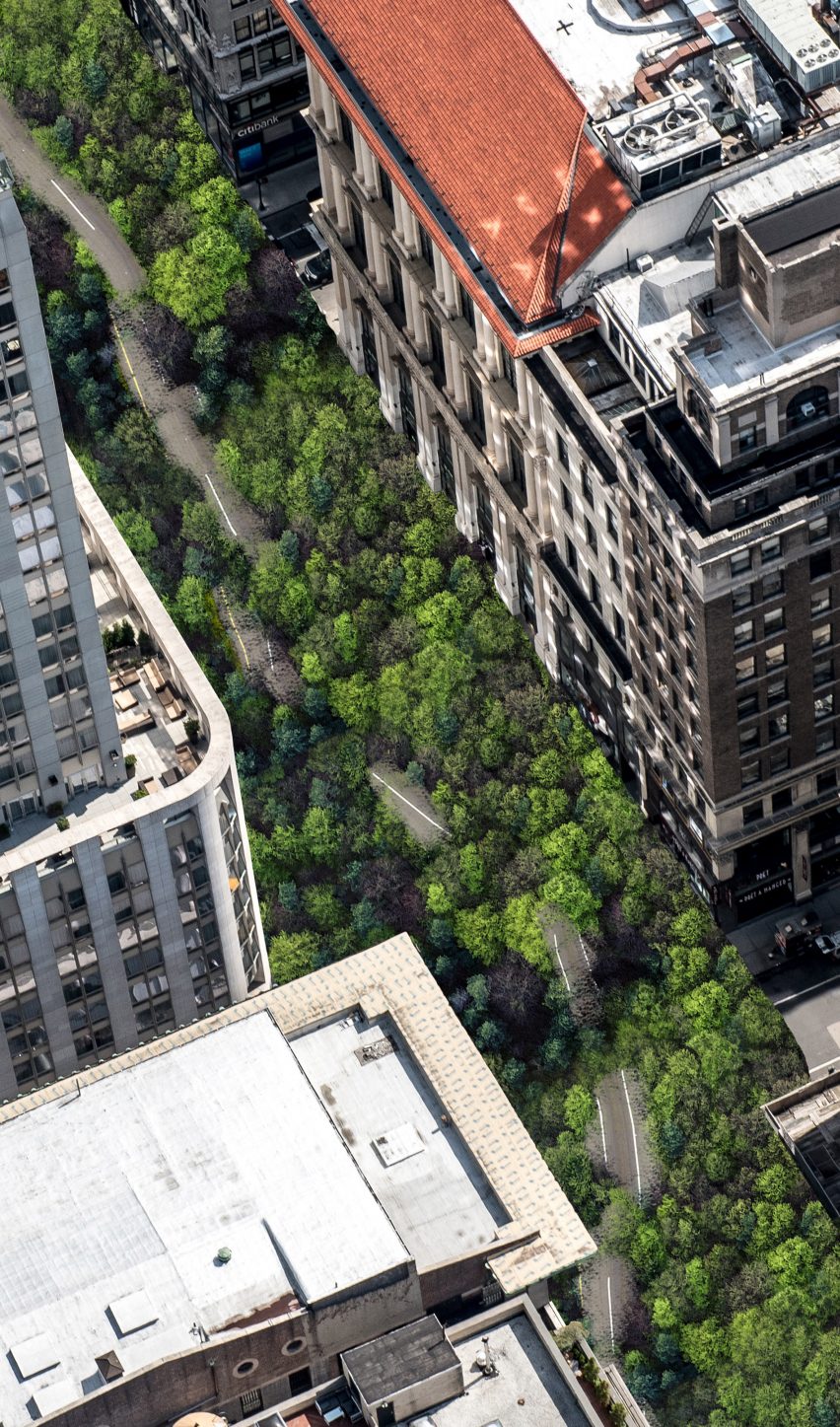
As autonomous vehicle technology continues to develop rapidly, many designers and companies are coming up with ideas for how to integrate it into existing urban infrastructure.
Earlier this year, Amazon was awarded a patent for a technology that would enable driverless cars and trucks to navigate reversible lanes.
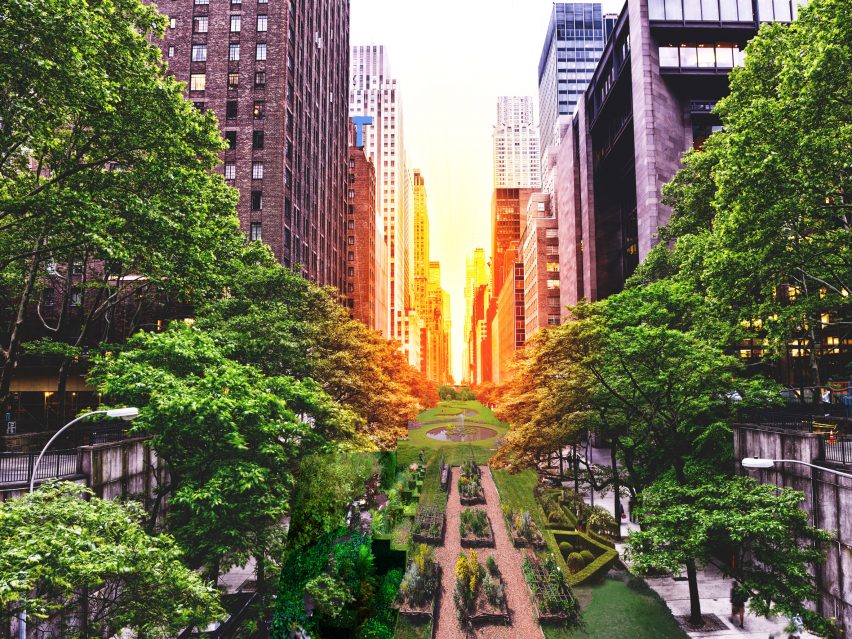
Meanwhile, a group of researchers at MIT has developed a conceptual traffic system that would enable driverless vehicles to whizz through intersections without colliding, eliminating the need for signals.
Edg says Loop NYC is "shockingly implementable" and would "provide an inexpensive, reliable, sustainable and infinitely expandable mode of transportation".